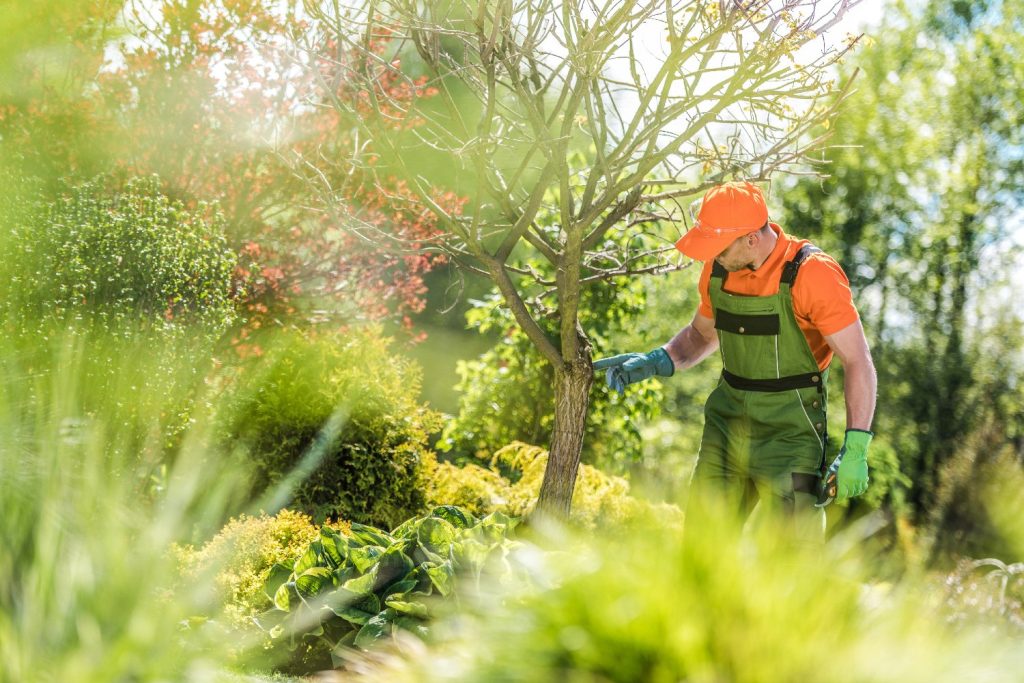Remove Moss from the Tree
Moss can add a touch of enchantment to a forest, but when it takes over your trees, it can be a cause for concern. Moss, a simple plant, can harm your trees if it grows excessively. In this comprehensive guide, we’ll explore the reasons for moss growth on trees and How to remove moss from the tree? the potential harm it can cause, and, most importantly, how to effectively remove moss to ensure your trees remain healthy and vibrant.
Understanding Remove Moss from the Tree
Moss is a non-parasitic plant that thrives in damp, shaded environments. It doesn’t harm trees directly, but it can indicate an underlying issue:
- Excess Moisture: Moss loves moisture. Poor drainage or excessive rain can create a suitable environment for moss growth.
- Low Light: Trees with dense canopies can block sunlight, creating a shady environment conducive to moss growth.
- Nutrient Deficiency: Moss can outcompete tree bark for nutrients, potentially impacting tree health.
The Potential Harm of Moss on Trees:
While moss itself isn’t directly harmful to trees, it can indirectly affect their well-being:
- Reduced Photosynthesis: Excessive moss can block sunlight from reaching tree leaves, reducing photosynthesis and affecting tree growth.
- Moisture Retention: Moss retains moisture, which, if excessive, can lead to bark decay and create an environment for wood-rotting fungi.
Methods to Remove Moss from Trees:
You’ll need a few tools and materials to get started:
- Soft-Bristle Brush: For gently scrubbing moss from the tree’s bark.
- Water: To moisten the moss and aid in removal.
- Gloves: Protect your hands while working with moss.
1. Manual Removal:
- Materials Needed: Soft-bristle brush, water, gloves.
- Procedure: Gently scrub the moss from the tree’s bark using a soft-bristle brush and water. Avoid causing damage to the tree’s bark.
2. Pruning and Thinning:
- Materials Needed: Pruning shears, loppers.
- Procedure: Prune or thin the tree’s branches to allow more sunlight to reach the affected areas, making them less conducive to moss growth.
3. Improve Drainage:
- Materials Needed: Drainage solutions (e.g., French drains).
- Procedure: Address any drainage issues around the tree to reduce excess moisture that promotes moss growth.
4. Increase Sunlight Exposure:
- Materials Needed: Pruning tools.
- Procedure: Prune nearby trees or branches to increase sunlight exposure to the moss-infested tree.
5. Chemical Treatment:
- Materials Needed: Moss control products (copper sulfate or zinc sulfate), sprayer.
- Apply a moss control product carefully as these chemicals can harm other plants.
6. Preventive Measures:
- Materials Needed: Shade-tolerant ground covers, gravel, mulch.
- Plant shade-tolerant ground covers around the tree to reduce moisture and create a less favorable environment for moss growth.
Iron Sulphate: An Effective Solution Against Moss
It works by dehydrating moss cells and creating an acidic environment that is unfavorable for moss growth.
Why does Iron Sulphate work against Moss?
- Moss Dehydration: Iron sulfate is a desiccant, meaning it removes moisture from moss cells. This dehydration process inhibits acidic pH: Iron sulfate has an acidic pH, creating an inhospitable environment for moss. Most moss species prefer neutral to slightly acidic conditions, so the acidity of iron sulfate disrupts their growth.
s growth and eventually causes it to die.
- Quick Action: Iron sulfate acts relatively quickly, making it a convenient choice for those looking to rid their surfaces of moss promptly.
Using Iron Sulphate for Moss Removal:
- Safety First: Wear gloves and safety glasses
- Proper Dilution: Dissolve iron sulfate in water according to the manufacturer’s instructions.
- Application: Apply the iron sulfate solution to the moss-infested area using a garden sprayer or a watering can.
- Timing: Choose a time when rain is not expected for at least 24 hours to allow the iron sulfate to work its magic undisturbed.
Environmental Considerations:
While iron sulfate is effective, it’s essential to use it responsibly:
- Avoid applying it near water bodies to prevent runoff contamination.
- Use iron sulfate sparingly, targeting specific moss-prone areas rather than blanket applications.
Related Posts:
How much time does iron Sulphate take to kill moss?
The time it takes for iron sulfate to kill moss can vary depending on several factors, including the moss species, environmental conditions, and the concentration of the iron sulfate solution used
Initial browning:
Shortly after application, you may notice the moss starting to turn brown. This is an indication that the iron sulfate is beginning to dehydrate the moss cells.
Gradual deterioration:
Over the next week or two, the moss will continue to deteriorate. It may become darker in color as it dies off.
Moss death :
Within a few weeks, the moss should be fully dead, appearing black or dark brown.
Removal :
After the moss has died, you can manually remove it from the surface. Be cautious when doing this to avoid damaging the underlying material.
Precautions and Tips:
- Always wear appropriate safety gear, including gloves and eye protection, when removing moss.
- Be gentle when manually removing moss to avoid damaging the tree’s bark.
- Follow manufacturer instructions when using chemical treatments and consider the environmental impact.
- Regularly monitor and maintain the tree to prevent moss from returning.
Conclusions
In conclusion, removing moss from a tree involves gentle cleaning, enhancing the tree’s environment, and taking preventive measures to maintain its health and appearance. Always be cautious not to harm the tree during the moss removal process. Learn How to remove moss from the tree get all information about tree removal and tree care.




